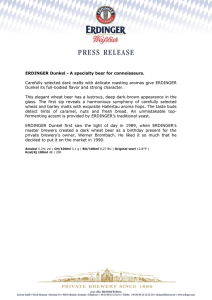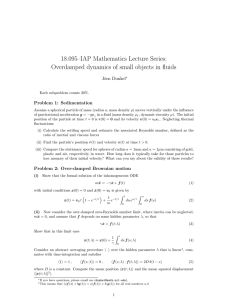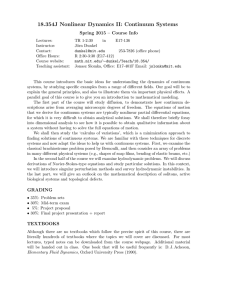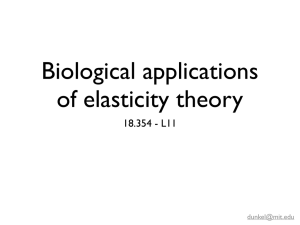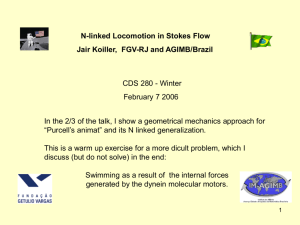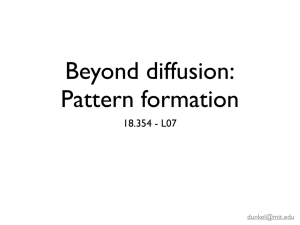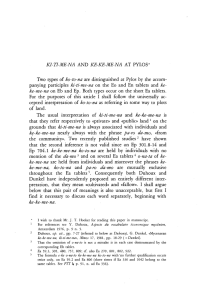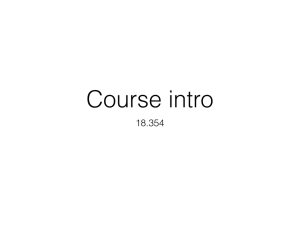18.S995–Mathematical Concepts in Biology and Biological Physics J¨ orn Dunkel Fall 2014
advertisement
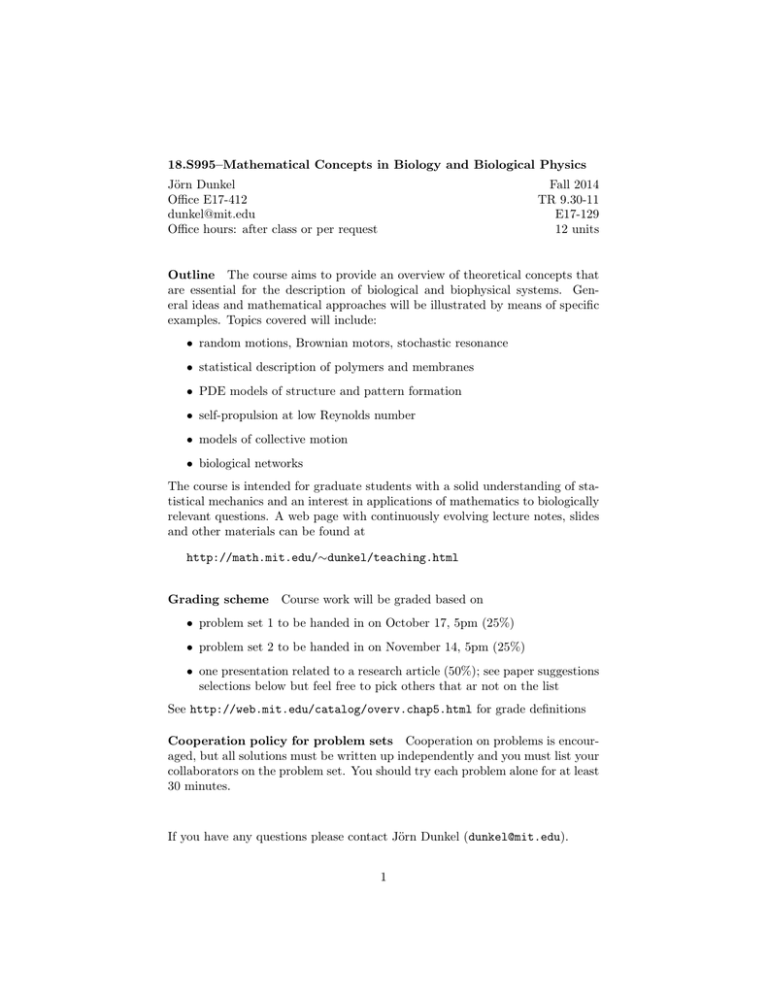
18.S995–Mathematical Concepts in Biology and Biological Physics Jörn Dunkel Office E17-412 dunkel@mit.edu Office hours: after class or per request Fall 2014 TR 9.30-11 E17-129 12 units Outline The course aims to provide an overview of theoretical concepts that are essential for the description of biological and biophysical systems. General ideas and mathematical approaches will be illustrated by means of specific examples. Topics covered will include: • random motions, Brownian motors, stochastic resonance • statistical description of polymers and membranes • PDE models of structure and pattern formation • self-propulsion at low Reynolds number • models of collective motion • biological networks The course is intended for graduate students with a solid understanding of statistical mechanics and an interest in applications of mathematics to biologically relevant questions. A web page with continuously evolving lecture notes, slides and other materials can be found at http://math.mit.edu/∼dunkel/teaching.html Grading scheme Course work will be graded based on • problem set 1 to be handed in on October 17, 5pm (25%) • problem set 2 to be handed in on November 14, 5pm (25%) • one presentation related to a research article (50%); see paper suggestions selections below but feel free to pick others that ar not on the list See http://web.mit.edu/catalog/overv.chap5.html for grade definitions Cooperation policy for problem sets Cooperation on problems is encouraged, but all solutions must be written up independently and you must list your collaborators on the problem set. You should try each problem alone for at least 30 minutes. If you have any questions please contact Jörn Dunkel (dunkel@mit.edu). 1 Paper suggestions (random order) 1. B. H. Good, I. M. Rouzine, D. J. Balick, O. Hallatschek, M. M. Desai Distribution of fixed beneficial mutations and the rate of adaptation in asexual populations PNAS 109: 4950-4955, 2012 2. L. Dai, K. S. Korolev, J. Gore Slower recovery in space before collapse of connected populations Nature 496, 355 - 358, 2013 3. R. Daniel, J. R. Rubens, R. Sarpeshkar, T. K. Lu Synthetic analog computation in living cells Nature 497: 619623, 2013 4. A. Gamba, M. Nicodemi, J. Soriano, A. Ott Critical behavior and axis defining symmetry breaking in hydra embryonic development PRL 108: 158103, 2012 5. A. Shapere, F. Wilczek Self-propulsion at low Reynolds number PRL 58: 2051-2054, 1987 6. A. Shapere, F. Wilczek Geometry of self-propulsion at low Reynolds number Journal of Fluid Mechanics, 198: 557-585, 1989 7. A. Tero et al. Rules for Biologically Inspired Adaptive Network Design Science 327: 439-442, 2010 8. D. J. Watts, S. H. Strogatz Collective dynamics of ’small-world’ network Nature 393: 440-442, 1998 9. V. Kantsler, R. E. Goldstein Fluctuations, Dynamics, and the Stretch-Coil Transition of Single Actin Filaments in Extensional Flows PRL 108: 038103, 2012 10. I. Lestas, G.Vinnicombe, J. Paulsson Fundamental limits on the suppression of molecular fluctuations Nature 467: 163-164, 2010 11. J. Paulsson Summing up the noise in gene networks Nature 427: 415-418, 2004 2
